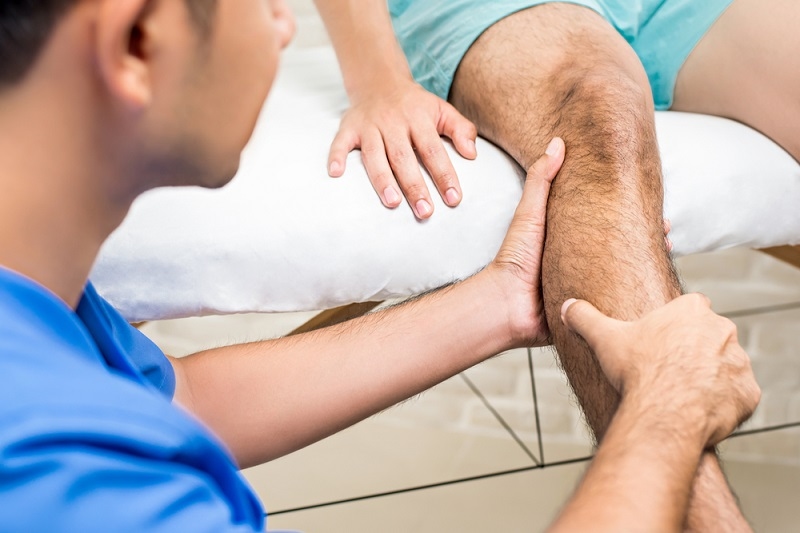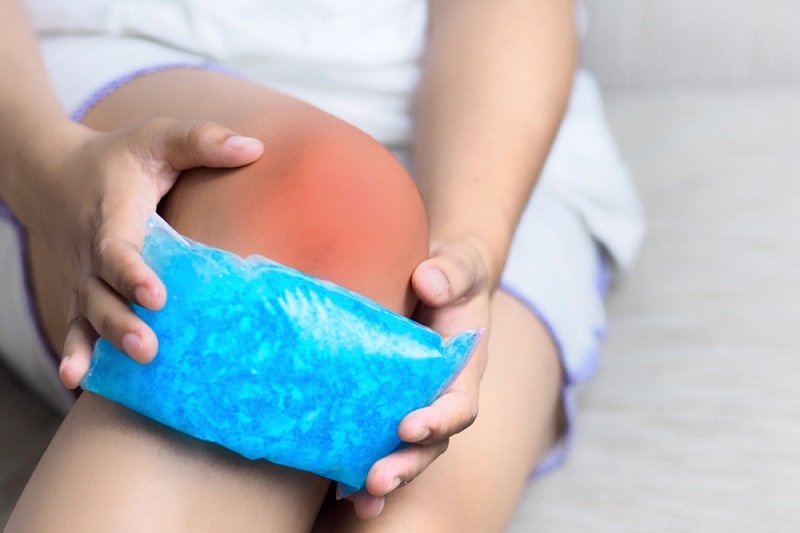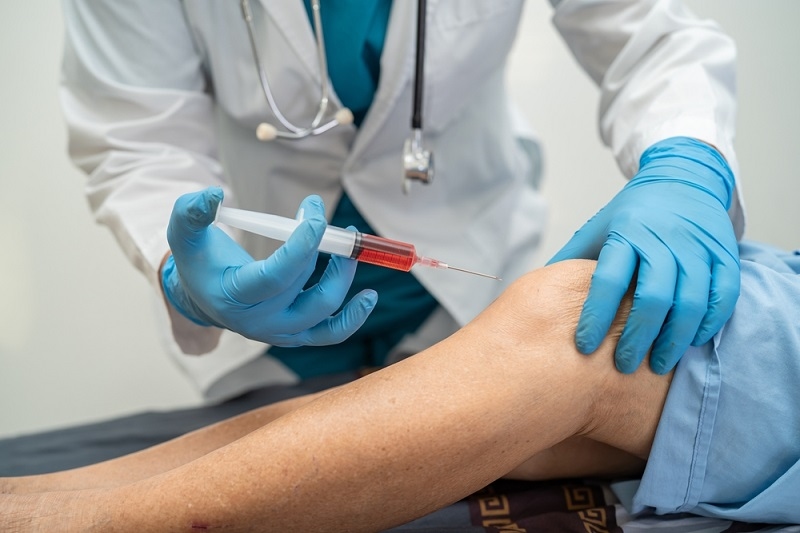Pain-Free Life: Techniques for Relieving Your Knee Pain

Living with chronic knee pain can be debilitating, affecting every aspect of your life. Simple tasks like walking, climbing stairs, or even standing up become a daily challenge. If you're tired of relying on pain medication and want to regain control over your life, this blog is for you. We will explore some proven techniques for knee pain relief that can help you step into a pain-free life.
Reasons for Knee Pain
Before delving into the techniques for knee pain relief, it's essential to understand the common causes of knee pain. Identifying the underlying reasons can help you address the root cause and tailor your approach to pain management. Here are some common reasons for knee pain:
Osteoarthritis

Osteoarthritis is a degenerative joint disease that often affects the knees. It occurs when the protective cartilage that cushions the joints wears down over time. This condition leads to pain, stiffness, and swelling in the knees, especially during movement.
Ligament Injuries
Injuries to the ligaments in the knee, such as an anterior cruciate ligament (ACL) tear or a medial collateral ligament (MCL) injury, can cause significant knee pain. These injuries often occur during sports activities or sudden twisting movements, resulting in instability and discomfort.
Tendonitis
Tendonitis refers to inflammation of the tendons around the knee joint. It can be caused by overuse, repetitive motions, or sudden impact. Tendonitis commonly affects the patellar tendon (patellar tendonitis or jumper's knee) or the iliotibial (IT) band.
Meniscus Tears
The meniscus is a C-shaped piece of cartilage that acts as a shock absorber between the thighbone and shinbone. Sudden twisting or direct impact can cause a tear in the meniscus, resulting in knee pain, swelling, and limited mobility.
Bursitis
Bursitis is the inflammation of the bursae, small fluid-filled sacs that cushion the knee joint. It can occur due to repetitive motions, kneeling, or prolonged pressure on the knee. Bursitis leads to localized pain, tenderness, and swelling.
Patellofemoral Pain Syndrome (PFPS)
Also known as a runner's knee, PFPS is characterized by pain in the front of the knee, around the kneecap (patella). It can be caused by improper tracking of the patella, muscle imbalances, or overuse. Activities like running, jumping, or squatting often exacerbate the pain.
Rheumatoid Arthritis (RA)
Rheumatoid arthritis is an autoimmune condition that causes chronic inflammation in the joints, including the knees. It leads to pain, stiffness, swelling, and potential joint deformity. Unlike osteoarthritis, which primarily affects older adults, RA can occur at any age.
Overuse and Repetitive Strain
Engaging in high-impact activities or repetitive motions that stress the knee joint can result in pain and discomfort. Long-distance running, jumping, or participating in certain sports without proper conditioning and rest can lead to overuse injuries and knee pain.
Obesity
Carrying excess weight puts additional stress on the knee joints, leading to pain and increased risk of conditions like osteoarthritis. Weight loss and maintaining a healthy BMI can significantly alleviate knee pain in overweight individuals.
Trauma and Accidents
Direct trauma, such as a fall, sports injury, or a car accident, can cause severe knee pain. Fractures, dislocations, or other structural damage to the bones and ligaments in the knee joint require immediate medical attention and intervention.
Understanding the reasons behind your knee pain can guide you in choosing appropriate treatments and lifestyle modifications. It's crucial to consult with a healthcare professional to receive an accurate diagnosis and develop a personalized plan for knee pain relief. By addressing the underlying cause, you can effectively manage your pain and improve your knee health.
Proven Techniques for Knee Pain Relief

When it comes to finding relief from knee pain, there are several proven techniques that can help alleviate discomfort and improve your quality of life. Incorporate these techniques into your daily routine to experience relief and regain mobility
Strengthening Exercises
One of the most effective ways to alleviate knee pain is by strengthening the muscles around your knees. Weak muscles can put additional stress on the joints, leading to pain and discomfort. Include exercises like leg lifts, squats, and lunges in your daily routine to improve knee stability and reduce pain.
Low-Impact Activities
Engaging in low-impact activities can help relieve knee pain by reducing stress on the joints. Consider activities like swimming, cycling, or using an elliptical machine. These exercises provide cardiovascular benefits without putting excessive strain on your knees.
Weight Management
Maintaining a healthy weight is crucial for managing knee pain. Extra pounds can exacerbate the stress on your knees and increase discomfort. Incorporate a balanced diet and regular exercise to shed excess weight and alleviate pressure on your knee joints.
Physical Therapy
Consulting a physical therapist can be immensely beneficial for knee pain relief. They can assess your condition and create a personalized treatment plan, including exercises, stretches, and other therapies. Physical therapy can help improve flexibility, reduce pain, and enhance overall mobility.
Heat and Cold Therapy

Applying heat or cold to your knees can provide temporary relief from pain and inflammation. Use a heating pad or take a warm bath to relax the muscles and improve blood circulation. Alternatively, applying an ice pack wrapped in a cloth can help reduce swelling and numb the area.
Assistive Devices
Using assistive devices can support your knee joints and alleviate pain. Knee braces, compression sleeves, or orthotic shoe inserts can provide stability and reduce stress on the knees. Talk to your healthcare professional to determine which device is most suitable for your condition.
Acupuncture
Acupuncture, an ancient Chinese therapy, has been found to be effective in managing knee pain. Thin needles are inserted into specific points in the body, stimulating the release of endorphins and promoting pain relief. Consider consulting a licensed acupuncturist to explore this alternative treatment option.
Medications and Injections

Over-the-counter pain medications, such as nonsteroidal anti-inflammatory drugs (NSAIDs), can provide temporary relief from knee pain. However, it is important to consult your doctor before taking any medication. In some cases, corticosteroid injections may be recommended to reduce inflammation and relieve pain.
Lifestyle Modifications
Making certain lifestyle modifications can significantly impact knee pain relief. Avoid activities that put excessive strain on your knees, such as high-impact sports or activities that involve repetitive knee movements. Opt for supportive footwear and use proper body mechanics when lifting heavy objects.
Surgical Intervention
If conservative treatments fail to provide relief, your doctor may recommend surgical intervention. Procedures like arthroscopy, partial knee replacement, or total knee replacement can be considered based on the severity of your condition. Discuss the pros and cons of surgery with your orthopedic surgeon to make an informed decision.
Conclusion
Knee pain doesn't have to control your life. By implementing these proven techniques, you can take the necessary steps toward a pain-free life. Remember to consult your healthcare professional before starting any new exercise or treatment regimen. With dedication and perseverance, you can regain mobility, improve your quality of life, and step into a pain-free future.
This content was created by AI
